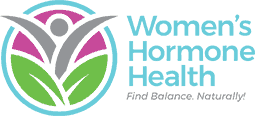We have all been affected by breast cancer in our lives whether by a friend or relative- or you are a breast cancer survivor.
We are all aware that breast cancer awareness and early detection of breast cancer is important for the best outcomes and survival. But why will 1 in 8 women develop breast cancer in the United States in their lifetime? It is just too many and I often wonder are we doing enough individually and educationally for breast cancer prevention?
The potential causes of breast cancer are varied: genetic predisposition, long -term hormonal replacement therapy, alcohol, environmental pollution, and lifestyle choices.
We also cannot deny that there are toxins in our environment from chemicals in our carpets, mattresses, the air we breathe to pesticides in our soil and drinking water to our personal care items we put on our skin. Environmental toxins called xenoestrogens, also known as endocrine disruptors, are capable to attaching to our own estrogen receptors causing disruption in healthy hormone metabolism. This can lead to poor estrogen detoxification and estrogen dominance and if not addressed, DNA damage and estrogen related cancers.
This is why I believe every woman, no matter what age, should be taking steps daily for breast cancer prevention, whether it runs in your family or not. In fact, 85% of women who are diagnosed with breast cancer do not have a family history. We can empower ourselves with the gift of awareness and healthy choices instead of living in fear of the unknown.
October is breast cancer awareness month so I want to encourage you to consider these action steps to actively and mindfully optimize your estrogen metabolism and detoxification.
1. Avoid xenoestrogens by choosing natural personal care products, avoiding perfumes and plastics as much as possible
- Phthalates – diethyl phthalate (DEP), dibutyl phthalate (DBP) and benzyl butyl phthalate (BBP) including anything with ‘fragrance’ on the label of shampoos, laundry detergent, dairy products, hard plastics
- Erythrosine (food coloring FD&C Red No. 3)
- Bisphenol A, BPA (polycarbonate plastic denoted as #7, #3 or PC on the recycling symbol) also found on thermal paper receipts
- Polychlorinated biphenyls, PCBs (electrical oils, lubricants, adhesives, paints)
- Ethinylestradiol (birth control products)
- 4- Methylbenyzlidene camphor, 4-MBC (sunscreen lotions)
- Parabens, commonly known as methylparaben, ethylparaben, propylparaben and butylparaben (cosmetics, lotions and shampoos)
2. Support healthy estrogen metabolism by creating a ‘healthy breast’ diet
- Minimal alcohol intake, especially beer
- Correct any iodine deficiency as it is anti-estrogenic with kelp, scallops, shrimp, wakame (seaweed)
- Whole food, plant-based diet avoiding processed and packaged foods (vegan or Pegan diet)
- Daily intake of vegetables from the brassica family: broccoli, kale, cabbage, cauliflower
- Use the supplement diindolylmethane (DIM) if estrogen dominant
- Dairy-free diet
3. Monitor estrogen levels, and metabolism if using synthetic & bio-identical hormones (birth control pills, hormone replacement) and know how YOU handle estrogens in your body
- DUTCH urine hormone test ( evaluates 2 (OH),4 (OH),16 (OH) estrogen detoxification pathways + catechol-o-methyltransferase (COMT) methylation)
- Genova estrogen metabolism assessment
- GI-Map (beta glucuronidase enzyme estrogen metabolism marker in the GI system)
4. Incorporate phytoestrogens for healthy estrogen metabolism: considered a weak estrogen, or anti-estrogenic, as they bind to the beta receptor sites, which are protective (Xenoestrogens bind to the alpha receptor sites and increase risk of breast cancer)
- Ground flaxseeds (lignons)
- Fermented, organic, non-GMO soy products (genestien)
5. Maintain a healthy weight: adipose (fat) tissue is a source of estrogen production, and is the main source of estrogen in postmenopausal women.
- Exercise regularly
- Reverse insulin resistance with diet
- Maintain healthy gut (probiotics, fiber)
- Daily liver detoxification habits
With these 5 action steps, my hope is that we can be more proactive with our self-care and consider daily, estrogen-friendly habits that protect us by supporting healthy hormone balance and detoxification.
With Love & Gratitude,








